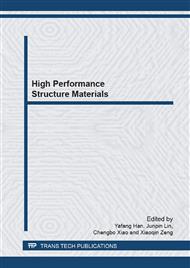p.478
p.483
p.489
p.497
p.502
p.507
p.513
p.518
p.526
Effect of Salt-Coating Hot Corrosion on Stress-Rupture Properties of a Corrosion Resistant Directionally Solidified Superalloy
Abstract:
The hot components of gas turbine are loaded by high stresses in presence of high-temperature oxidation and hot corrosion environment during service process. It is important to simulate the interaction of stress and hot corrosion on the components in real service situation. Effect of the ratios of salt mixtures of Na2SO4/NaCl and the coating amounts of salt mixtures on the microstructure and the high temperature stress-rupture properties of a corrosion resistant directionally solidified superalloy at 850/500MPa were investigated. The results demonstrated that the stress-rupture life decreased with the coated salt mixture ratio of Na2SO4/NaCl changing from 3:1 to 9:1. Stress-rupture lives of the alloy decreased from 63 h to 42 h, while the coated salt mixtures amount increased from 1 mg/cm2 to 4 mg/cm2, hereby the salt mixture contained 75% Na2SO4 and 25% NaCl. When the coating ratio of Na2SO4/NaCl was 9:1, the stratified corrosion products layers were composed of the (Ni, Co)O, Ni (Al, Cr)2O4 layer, bright grey phase that be identified as CrWO4, and the underlying dispersed particle shape phase CrSx, the underlying layer forms the sulfides eutectic and leads to catastrophic destruction for the alloy, which decreased the stress-rupture lives dramatically.
Info:
Periodical:
Pages:
502-506
Citation:
Online since:
February 2013
Authors:
Price:
Сopyright:
© 2013 Trans Tech Publications Ltd. All Rights Reserved
Share:
Citation:


